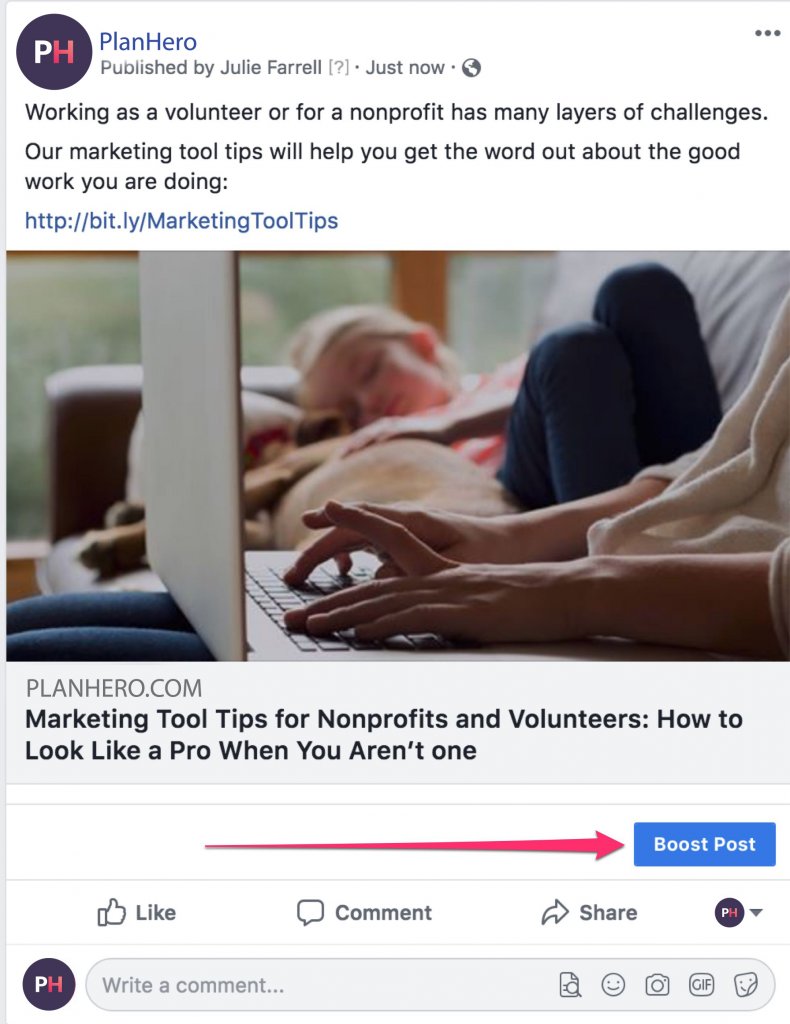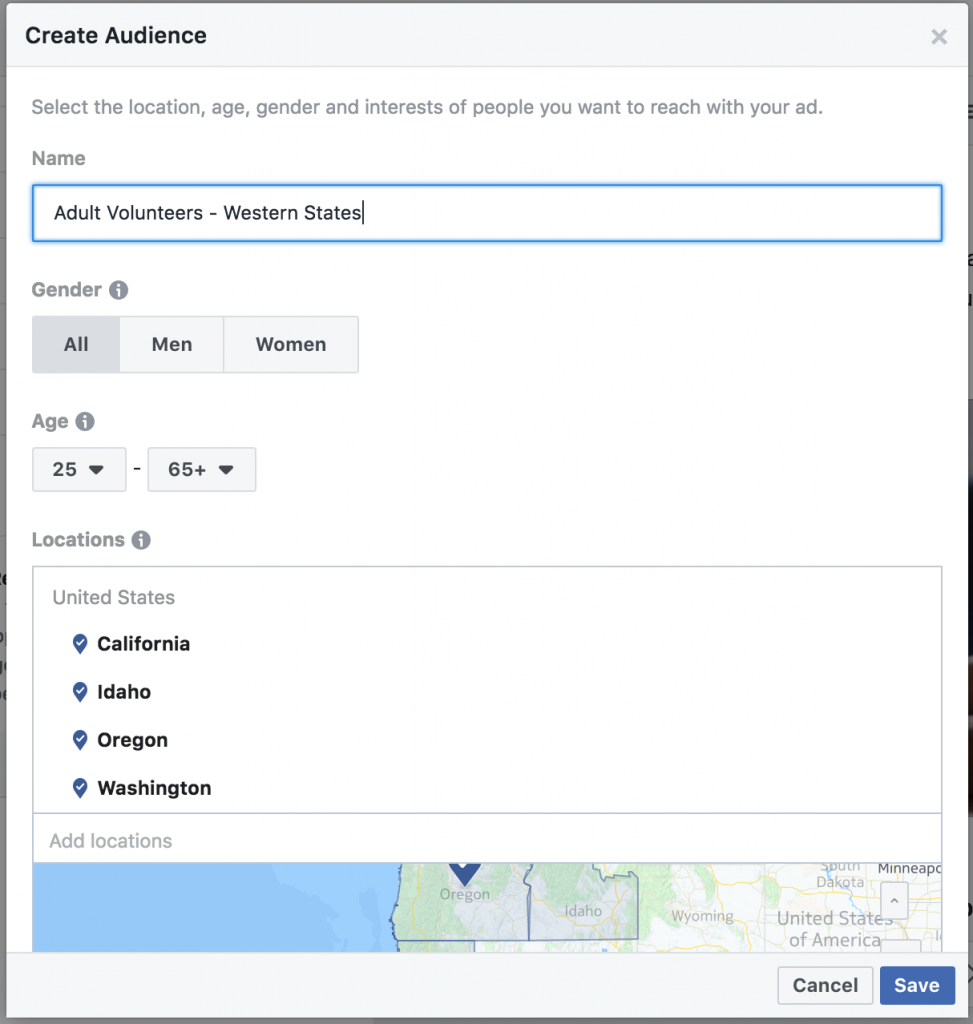This post is not one of our standard Tool Tips about our own PlanHero Tools, but we trust you’ll find the content useful.
Whether you’re a nonprofit professional or a serial volunteer, you likely have the need to communicate to your members, volunteer base, or donor base. This may be via email, social media, or the good old post office. Our marketing tool tips for nonprofits and volunteers include some of the tools we use (or that have been recommended by others) that don’t require a degree in graphic arts and design to make your organization look professional without breaking the budget.
1. Canva
I’ve been using Canva for years and it just keeps getting better. While I use Photoshop, I am far short of being adept at using it. Canva can help you produce social media posts, graphics for email campaigns, and even infographics that look like someone in possession of far more talent than you created it. They offer a free version, but I ended up upgrading to the $12.00/month version to satisfy our needs at PlanHero.

2. Adobe Spark
Adobe Spark is similar to Canva in that it offers a variety of pre-formatted designs organized by type (Facebook post, Facebook Page header image, presentation templates, etc.). For me, it has fewer options than Canva, but I’m still using the free version.
We haven’t used this one ourselves, but we checked it out. Again, it comes with many templates to choose from, and you can order the physical versions of whatever you are creating (e.g. banners, posters, flyers, etc.). It seems fairly easy to navigate and came to us highly recommended from a church administrator who has used it a lot. Free version available.
4. Bit.ly
This is a URL shortener. For those who don’t know, a URL is the address for a website that you see in your browser (e.g. Safari or Chrome) bar. Sometimes when you copy and paste a super long website address (URL) onto something like a Facebook Page or an email, it detracts from the aesthetic of the rest of the message you’re trying to get across. The free version of Bit.ly allows you to quickly and simply shorten your URL and you can even customize what it is.
So something like this:
“https://coolmomtech.com/2018/11/viral-iphone-keyboard-trick-really-works/?utm_source=Cool+Mom+Network+Email+List&utm_campaign=98688369ac-EMAIL_CAMPAIGN_2018_11_19_10_10_COPY_01&utm_medium=email&utm_term=0_5993ea8135-98688369ac-97563013”
Can be changed to something like this:
“http://bit.ly/CoolMomPicksiPhoneTrick”
And, you can track how many people actually clicked on your link as well!
If you’re not using Mail Chimp, Constant Contact, Campaign Monitor, or a similar email PLATFORM for your emails to your volunteers, members, or donors, you’re missing out (unless you have a sophisticated CRM with an email module).
Why are you missing out? Because there is a wealth of data to be mined from these platforms. Here are a few examples:
- Who opened your email
- Who clicked on what links
- Who shared your email
Because of the above data, you can then begin to refine your email list to those who actually open them, but more importantly, you can segment and/or retarget your campaigns. Perhaps you have some people who always click through regarding certain segments of your populations like seniors or art for youth. When it comes to fundraising time, you could then send those individuals special targeted emails that speak to the particular sectors about which they are passionate.
All of the email service platforms listed above have pros and cons. While Campaign Monitor might be a little more expensive than say Mail Chimp, we love the A/B split testing feature in Campaign Monitor. What’s A/B split testing? It allows the sender to email some percentage of a campaign out as a test with two versions…A and B. A “winning” version (the one with the most opens or the most link clicks for example), is then the final version that is automatically sent out by Campaign Monitor.
A Facebook Page is one that is created for a business or nonprofit. It is different from a personal Facebook profile page in that you can also promote posts. Facebook provides you with useful Page analytics that help you understand the demographics you are reaching with your posts…plus the volume too.
Your nonprofit Facebook Page can be a great way to reach and/or grow your community. BUT, it doesn’t come for free. Well, the actual Facebook Page is free, but getting meaningful exposure with it is not. We used to go to great lengths to try to outsmart Facebooks edgerank algorithms. Not anymore. This is a pay-for-play world now. Unless your Page followers change their settings to always see your posts (not likely), you need to pay Facebook to serve your posts to them. This is known as a Boosted Post. You can take this a step further and use the Facebook Ads manager to create specific ads and then retarget people using the Facebook Pixel.
For now, we’ll keep this simple.
To Boost a Post:
- Create a post (posts with video or images with very little text in them do best)
- Click on Boost Post at the bottom of the post

- On the left side of the pop-up page, click on Create Audience

- This is the gold—you can select a geographic area, along with demographic information
- Example 1: Your organization is offering reduced rate mammograms in two weeks in a mobile unit in your home town
- You might then create an audience that is women, ages 40 and older, who live within a 30 mile radius of your town
- You would then boost it for some amount of money for some number of days
- Example 2: Your organization needs volunteers to help with community trash pick-up day.
- You might then create an audience that is men and women, ages 16 and older, who live within a 15 mile radius of your town, who have expressed an interest in volunteerism and/or the environment
- Your post would hopefully include a link to a Signup created with our Signup Tool so that people exposed to your post could sign up to help directly
- You would then boost it for some amount of money for some number of days and watch the signups roll in
- Example 1: Your organization is offering reduced rate mammograms in two weeks in a mobile unit in your home town
How about you? Do you have any easy-to-use tools that you’d like to share with your fellow volunteers?
